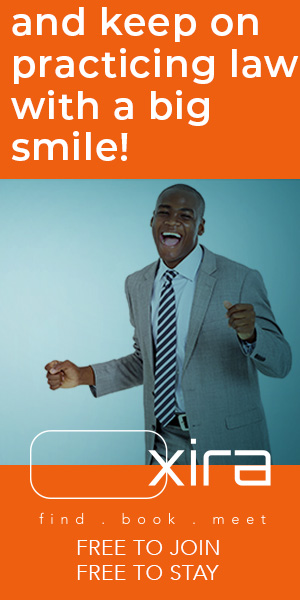Joe Douglass | Done well, videos become powerful, persuasive tools that sway juries and adjusters alike.
The post Don’t Just Show, Prove: Why Lawyers Need Expert Video Storytelling in the TikTok Era appeared first on Articles, Tips and Tech for Law Firms and Lawyers.
For legal teams, showing a case visually — and proving it with evidence — is crucial.

Table of contents
- Come With ‘Receipts’: Building a Case With Public Records
- Humanizing the Client’s Experience With Personal Records
- Day-in-the-Life Videos: Making Daily Struggles Visible
- Interviews: Crafting a Genuine and Impactful Narrative
- Strategic Video Storytelling for Faster, Higher Settlements
- The ‘WTF’ Factor: Capturing Attention From the Start
- Going Beyond Standard Videography
- Don’t Just Show, Prove
Video has become indispensable for capturing attention and telling compelling stories — including in the legal field. Attorneys facing complex cases now encounter audiences expecting more than just facts on paper. They expect a story that resonates and proves every claim with evidence and impact. Creating powerful legal videos has shifted from luxury to necessity.
The same people scrolling through TikTok and Instagram or watching Netflix documentaries sit on juries and decide claims. For legal teams, showing a case visually — and proving it with evidence — is crucial. But a polished video of talking heads in a conference room isn’t enough. Achieving significant settlements calls for storytelling grounded in journalistic rigor and empathy, turning raw evidence into undeniable, memorable visual narratives.
Come With ‘Receipts’: Building a Case With Public Records
Every compelling legal story starts with a solid foundation: gathering substantial evidence. Far from being a preliminary step, this process is essential for constructing a cohesive, irrefutable video. Public records often serve as this foundation, especially in cases where the narrative must be bulletproof.
Imagine a wrongful death case where the legal team wants to highlight ongoing safety violations by a large company. Through public records requests to OSHA, they gather documents showing a history of unaddressed complaints and inspection reports cataloging safety concerns. These records illustrate a pattern of negligence long before the incident, setting the stage for a powerful story that doesn’t just allege negligence but proves it visually and unequivocally.
Public records, like 911 call recordings, body-worn camera footage, and health inspection reports, are indispensable. They turn a case’s argument from theoretical to concrete. For instance, in a medical malpractice case, inspection reports showing repeated safety violations in areas directly related to the client’s complaint can add weight to the case. Accessing public records shifts a story from general claims to a specific, credible narrative that decision-makers find hard to overlook.
Humanizing the Client’s Experience With Personal Records
While public records provide the factual backbone, personal records — videos and photos from everyday life — bring the story to life. Authentic moments captured in personal footage allow the audience to look beyond the injury and connect emotionally with the person behind the complaint. Images of a plaintiff playing with children, exercising or enjoying daily life before an accident create a compelling before-and-after contrast that’s hard to ignore.
Consider a day-in-the-life video documenting a client’s life post-spinal cord injury. Footage of the client struggling with once-simple tasks — like getting out of bed, grooming, or using a wheelchair — shows not only the physical toll of the injury but also the resilience required to face each day. This type of visual narrative doesn’t rely on a narrator; the images speak for themselves, allowing jurors and adjusters to experience the plaintiff’s reality firsthand. These personal records shift the narrative from merely recounting events to an unforgettable story, making potentially abstract concepts like “pain” or “loss” real and relatable for viewers.
Day-in-the-Life Videos: Making Daily Struggles Visible
Day-in-the-life videos provide an essential perspective for jurors and adjusters unfamiliar with the realities of catastrophic injuries. These videos offer insight into the unique adaptations clients must make when living with conditions like third-degree burns, paralysis or other life-altering injuries.
Consider a juror watching footage of a plaintiff struggling to button a shirt or use a prosthetic limb to perform basic tasks. These images illustrate physical limitations and emotional tolls, helping jurors who have never faced mobility impairments understand the plaintiff’s suffering.
In a recent case involving a colleague, a day-in-the-life video proved crucial in conveying the daily struggles of a plaintiff with chronic pain. Footage of the plaintiff attempting to prepare a meal showed each painstaking movement required to avoid aggravating injuries, creating a clear picture of the adjustments needed for routine tasks. These videos educate and create empathy, breaking down barriers and enabling jurors to understand the long-term impacts of the plaintiff’s injuries in ways that medical jargon alone cannot convey.
Interviews: Crafting a Genuine and Impactful Narrative
Interviews with clients, family members and witnesses bring authenticity and credibility to any narrative. In legal storytelling, these interviews must be handled sensitively, allowing interviewees to share their experiences naturally.
For instance, in a negligence case I worked on, family members spoke about their profound sense of loss and injustice. The video conveyed both facts and emotional impact by capturing their feelings in an unscripted, conversational format. When presented naturally, these testimonies transform the video from a presentation into a compelling, human-centered narrative that resonates with viewers.
By guiding interviewees to discuss specific moments and emotions rather than following a strict Q&A, attorneys and video producers create an open environment where genuine stories unfold. This approach builds credibility and helps viewers feel invested in the narrative — an investment that can be instrumental in achieving favorable outcomes.
Strategic Video Storytelling for Faster, Higher Settlements
A professionally crafted legal video — often called a settlement documentary — is both a persuasive tool and an essential visual aid. Unlike depositions or legal documents, these videos distill the case’s core message into an accessible, emotionally engaging format. For many attorneys, a high-quality video can mean the difference between a swift settlement and a drawn-out court process.
In another negligent security case I worked on, a settlement video combining body-worn camera footage, client interviews, still photos and critical documents helped secure a favorable outcome. Mediators noted the video’s effectiveness, saying its clarity and emotional weight brought the case to life. This demonstrates that well-crafted legal videos aren’t just supplemental — they’re powerful tools capable of influencing outcomes and accelerating settlements.
The ‘WTF’ Factor: Capturing Attention From the Start
Attention spans are short, and immediately grabbing a viewer’s attention is crucial. The “WTF” factor — a concept refined in newsrooms — is equally powerful in legal storytelling. A striking image, arresting detail or unexpected fact can set the tone for a compelling narrative.
In one recent case, a wrongful death video opened with a dramatic, previously unseen body-worn camera clip that showed a key admission from the defendant. This initial moment didn’t just grab attention; it underscored the gravity of the case, ensuring that viewers were fully engaged from the start.
Legal teams must thoroughly research public records and revisit personal accounts to find these attention-grabbing details. In high-stakes legal contexts, these memorable openings help ensure the story resonates with viewers.
Going Beyond Standard Videography
Creating impactful legal videos requires more than technical skill. It demands a mastery of research, storytelling and legal standards. This approach extends far beyond typical courtroom videography, aiming instead to produce narratives that resonate on a human level.
Public records can contain hidden, essential details — like old inspection reports — that reveal patterns of negligence or systemic failure. In these videos, every photo, document or interview clip is selected not for its aesthetic but for its relevance to the story’s truth and strength.
Don’t Just Show, Prove
With platforms like TikTok, YouTube, Facebook and Netflix pervasive, visuals dominate communication, making expert storytelling essential for attorneys. When backed by rigorous research and crafted with precision, legal videos transcend mere case presentations to become powerful, persuasive tools that sway juries and adjusters alike. Attorneys who recognize the value of visual storytelling gain a crucial advantage, reaching decision-makers in ways traditional documents cannot. With endless options, however, viewers are more discerning than ever.
Don’t just tell your client’s story — prove it.
Image © iStockPhoto.com.

Don’t miss out on our daily practice management tips. Subscribe to Attorney at Work’s free newsletter here >


